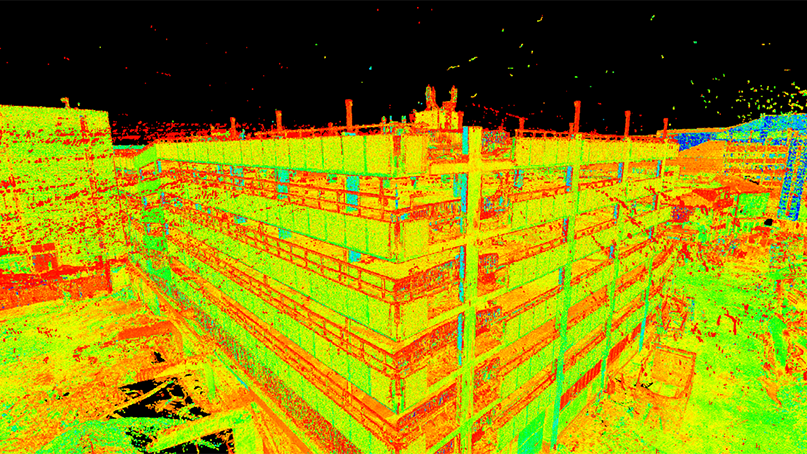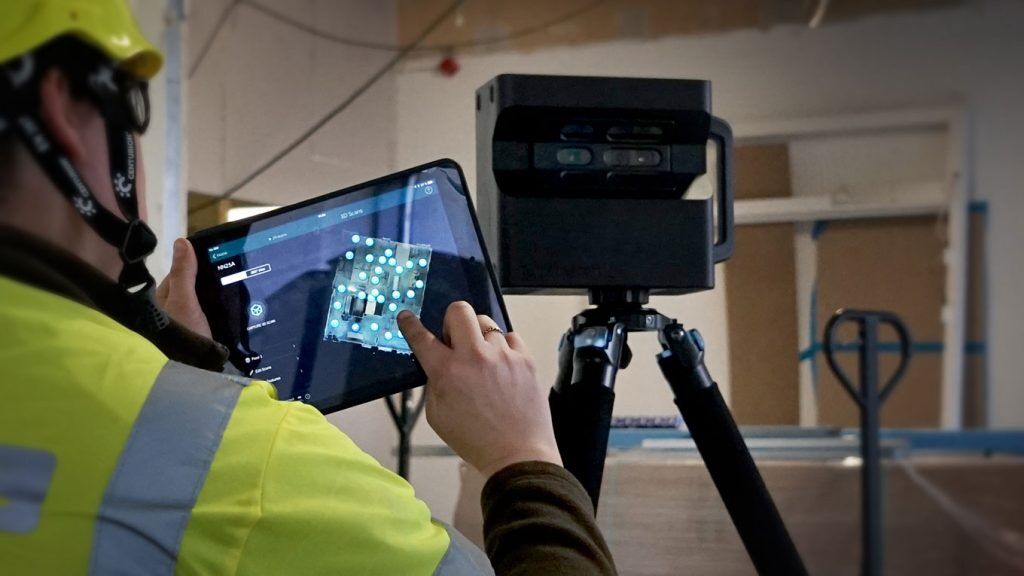Exactly How 3D Laser Scanning Transforms Architectural Design and Building And Construction Projects
3D laser scanning is transforming the landscape of building layout and building and construction. This innovation supplies unrivaled precision in catching existing atmospheres, which helps with better task preparation and execution. It reduces errors while enhancing effectiveness in numerous stages of advancement. The implications for partnership amongst designers, designers, and other stakeholders are significant. These innovations open up the door to brand-new design opportunities and ingenious services. What exists in advance for this advancing innovation?
The Basics of 3D Laser Scanning Modern Technology
3D laser scanning technology may appear complex, its core concepts are transformative and simple for architectural design. This innovation employs laser beams to catch accurate measurements of physical frameworks, generating a detailed point cloud that stands for the scanned atmosphere. A laser scanner produces fast pulses of light, measuring the time it takes for the light to return, which allows for the computation of distances with amazing precision.
The resulting point cloud can be exchanged a 3D design, providing engineers with important visual information. This model enables professionals to control and assess design aspects within their projects, enabling for innovative services and boosted visualization. By utilizing 3D laser scanning, engineers can better understand the current conditions of a website, ensuring that brand-new styles balance with their environments. This combination of innovation into architectural design notes a significant improvement, fostering creative thinking and precision in the area.

Enhancing Accuracy and Performance in Architectural Projects
As building tasks increasingly require precision and speed, 3D laser scanning becomes a critical device in boosting both accuracy and performance. This innovation catches millions of data points in a quick timeframe, developing exact and in-depth 3D designs of existing frameworks. The capability to obtain precise measurements decreases the danger of mistakes throughout the layout stage, allowing engineers to imagine their jobs with exceptional quality.
In addition, the fast data collection procedure minimizes the moment invested on-site, making it possible for teams to focus on analysis and style renovations. With real-time information availability, modifications can be made promptly, promoting a much more streamlined process. The integration of 3D laser scanning right into building techniques not only improves dimension accuracy yet additionally enhances the overall task timeline, assisting in quicker decision-making. In a sector where accuracy is crucial, this modern technology stands as a transformative force, elevating the requirements of building design and construction jobs.
Enhancing Collaboration Amongst Stakeholders
While traditional architectural processes usually involve fragmented interaction amongst stakeholders, 3D laser scanning fosters an extra natural collaborative atmosphere. By offering precise, high-resolution information, this modern technology enables engineers, engineers, customers, and contractors to run from a unified factor of recommendation. The detailed visualizations produced via laser scanning eliminate false impressions and ambiguities, making sure that all events have access to the exact same details.
This openness enhances decision-making and encourages timely comments, as stakeholders can conveniently visualize style aspects and spatial partnerships. Furthermore, the combination of 3D scanning information right into Structure Details Modeling (BIM) systems better improves collaboration, permitting real-time updates and modifications. Such seamless communication not only minimizes conflicts but also accelerates project timelines, as all stakeholders continue to be straightened throughout the layout and building and construction stages. Eventually, 3D laser scanning changes conventional process into a more collective and effective process, benefiting all parties entailed.
Opening Innovative Possibilities in Design
By making it possible for engineers to picture complicated detailed information and spatial connections, 3D laser scanning reveals imaginative opportunities in design. This technology permits exact mapping of existing environments, making it possible for engineers to check out innovative principles that might have formerly appeared impractical. With highly exact data, developers can trying out unique forms and products, pressing the boundaries of typical design.
Moreover, the assimilation of 3D laser scanning right into the style process cultivates partnership among multidisciplinary teams, motivating the exchange of ideas and boosting imagination. The comprehensive visualizations generated by this technology not just help in determining possible design difficulties yet also influence solutions that may not have actually been considered. Consequently, engineers can create a lot more vibrant and engaging rooms that resonate with individuals while fulfilling functional demands. Ultimately, 3D laser scanning changes the building landscape, empowering developers to understand their visions with extraordinary precision and creativity.
The Future of 3D Laser Scanning in Architecture and Construction
The combination of 3D laser scanning into architectural layout not only enhances imagination however likewise establishes the phase for its advancing role in the future of style and construction. As modern technology advances, the accuracy and efficiency of laser scanning will remain to improve, enabling building contractors and architects to develop extra intricate layouts with accuracy - 3D Scanning. Using this innovation in real-time data collection will facilitate better decision-making, reducing mistakes and simplifying operations
Future applications might include augmented and digital truth combinations, enabling stakeholders to visualize tasks in immersive settings. In enhancement, as sustainability ends up being a concern, 3D laser scanning will sustain the advancement of energy-efficient designs by providing thorough understandings into existing frameworks. As partnership among numerous techniques ends up being more necessary, the capability to share accurate 3D designs will certainly promote advancement and boost project end results. Eventually, like it 3D laser scanning will redefine standards in building layout and construction methods.
Frequently Asked Inquiries
What Is the Cost of Implementing 3D Laser Scanning Innovation?

How Long Does a Common 3D Laser Scanning Project Take?
A normal 3D laser scanning job can take anywhere from a few hours to a number of days, depending on factors such as the project's size, complexity, and the level of detail required for accurate information capture.
What Sorts Of Projects Advantage The Majority Of From 3D Laser Scanning?
3D laser scanning benefits various projects, site web particularly large-scale buildings, historic repairs, and intricate restorations. It improves accuracy in measurements, reduces mistakes, and provides in-depth information crucial for effective planning and implementation in architectural design and building and construction.

Exist Details Software Programs Required for 3D Laser Scans?
Yes, particular software application are essential for processing 3D laser scans. 3D Scanning. Popular choices consist of Autodesk Wrap-up, Faro Scene, and Leica Cyclone, each offering one-of-a-kind features tailored for evaluating and picturing checked information effectively in various projects
How Does 3D Laser Scanning Impact Environmental Sustainability in Construction?
3D laser scanning enhances environmental sustainability in construction by reducing material waste, enabling accurate dimensions, and advertising reliable source usage. This innovation enables much better planning, decreasing the ecological footprint of construction tasks via enhanced accuracy and efficiency.
3D laser scanning is changing the landscape of architectural style and construction. 3D laser scanning technology might this article seem complex, its core principles are simple and transformative for architectural style. By making it possible for engineers to picture complicated complex information and spatial partnerships, 3D laser scanning exposes innovative opportunities in style. The combination of 3D laser scanning into the design process promotes collaboration amongst multidisciplinary groups, motivating the exchange of concepts and improving creativity. The assimilation of 3D laser scanning right into building style not just improves creative thinking but additionally sets the phase for its evolving role in the future of architecture and building.